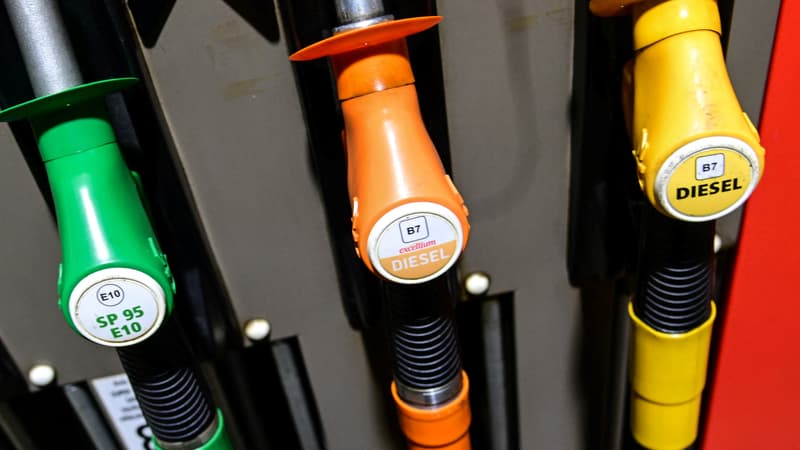With the end of the strike movement and the authorization of tanker trucks to circulate on weekends and holidays to supply the stations, we expected a return to normality for refueling in France in recent days.
However, in certain regions, such as Ile-de-France, Bourgogne Franche-Comté or Auvergne Rhône-Alpes, the situation remains tense with many stations in total or partial break.
Stations often out of gas
What is most lacking is a fuel: gasoline, either unleaded 95 (E10 or not) or unleaded 98. A situation that we already knew about last week, with a national figure of 18.8% of stations in difficulty on 26 October, including 80% that could no longer distribute gasoline.
This was particularly the case in Greater Paris, with 68.6% of stations without stock, well above the national average, and a lack of gasoline that continues to be felt a week later, this Wednesday morning, as verified by a BFMTV crew.
“This is the consequence of a region that has migrated faster from diesel to gasoline than in the rest of France. However, tanks are often sized with larger volumes of diesel,” explains Francis Pousse, president of the branch of service stations and new energies. of the Mobilianos union.
A structural problem of sizing the deposits based on the car fleet that has no short-term solution. Ile-de-France stands out as one of the rare regions where gasoline is in the majority: according to data provided by AAA Data, there are currently 52% gasoline vehicles in Ile-de-France, compared to 43% only at the level national. .
Gasoline less imported than diesel
The other explanation for this phenomenon lies on the supply side.
“In France, we can say that we are self-sufficient in lead, that we refine on-site and that we export in normal times, while we import diesel,” recalls Francis Pousse.
Therefore, site blockades have rather contributed to criminalizing gasoline refueling rather than diesel. The end of the strike movements, like the one this Monday at the TotalEnergies refinery in Gonfreville, in Normandy, should allow the stations to be supplied again, but it takes between fifteen and twenty days for the facilities to work again.
For the two Esso-ExxonMobil refineries, where the strike ended in mid-October, the resumption of activity is only planned for the next few days.
roads saved
A reassuring fact during the school holidays: the supply of motorway stations continues to benefit from priority supply. This Wednesday, on the main French networks, 93% of the stations had gasoline, 97% diesel and no station was declared in total rupture. A relief for the many French people who have started this second week of the All Saints holidays.
Strong fears for November 15
Despite these signs of improvement, more tensions are expected as November 15 approaches. This date corresponds to the lowering of the government fuel discount, which will go from 30 to 10 cents, and TotalEnergies, from 20 to 10 cents. Result: a mechanical price jump of 30 cents on the night of November 15-16. A registered increase that motorists will certainly seek to anticipate.
“At a time when station stocks are returning to acceptable levels, we have strong fears about the effects of this double dip in discounts,” says Francis Pousse.
To see what level of stock will be available at stations as we head into mid-November. And how strong the demand will be: with the fear that many motorists will multiply their “precautionary” refueling (refuel when you still have more than half of the deposit left, for example), or even take the opportunity to refuel drums before this is announced. price increase. What precipitates the French service stations in a new episode of shortage.
Source: BFM TV


